Can You Build a 16S2P LiFePO4 Battery with a Single JK 200A BMS
In the world of DIY battery building, the question often arises—can you build a 16S2P LiFePO4 battery using just one JK BMS? This challenge fascinates both newcomers and seasoned engineers. The idea of managing 32 LiFePO4 cells efficiently, safely, and cost-effectively with a single JK 200A BMS seems ideal. But does it work in practice? Let’s break down the feasibility, safety, performance, and steps involved to help you make the right decision.
- 1. Understanding the JK BMS and Its Capabilities
- 2. Can One JK BMS Handle a 16S2P LiFePO4 Pack?
- 3. JK BMS Installation Considerations for a 16S2P Battery
- 4. Benefits of Using JK BMS in a 16S2P LiFePO4 Build
- 5. JK BMS Troubleshooting Tips During Your Build
- 6. Real-World Applications Using JK BMS with 16S2P
- 7. Common Mistakes to Avoid When Using JK BMS with 16S2P
- 8. JK BMS vs Other BMS Brands for 16S2P Systems
- 9. Final Verdict: Should You Use One JK BMS for Your 16S2P LiFePO4 Battery?
- 10. The Bottom Line: Using a JK BMS in a 16S2P Build Works
Understanding the JK BMS and Its Capabilities
What Is a JK BMS and Why Choose It?
A JK BMS (Battery Management System) is a powerful and popular solution for managing lithium battery packs. Known for its built-in active balancing, Bluetooth monitoring, and high discharge support, the JK 200A BMS is commonly chosen for applications that require robust and reliable protection.
Key Specifications of the JK 200A BMS
Before diving into the build, let’s explore some technical highlights of the JK BMS:
Voltage Support: Typically for 4S to 24S configurations.
Active Balancing Current: Up to 1.2A.
Discharge Current: Supports up to 200A continuous.
Communication: RS485, CAN, and Bluetooth (optional).
Temperature Sensors: 2–4 channels for accurate thermal management.
These specs suggest that the JK BMS is more than capable of handling high-current systems like a 16S2P battery—provided that other factors are well aligned.
Can One JK BMS Handle a 16S2P LiFePO4 Pack?
What Does 16S2P Mean?
A 16S2P LiFePO4 battery consists of 16 cells in series (16S) and 2 cells in parallel (2P) per group, totaling 32 cells. This configuration usually gives:
Nominal Voltage: 51.2V (3.2V * 16)
Capacity: Double the single cell’s Ah rating (e.g., 280Ah * 2 = 560Ah)
Total Energy: Nominal voltage × total Ah (e.g., 51.2V * 560Ah ≈ 28.7kWh)
How Does the JK BMS Fit Into This Setup?
Yes, you can use a single JK 200A BMS for a 16S2P setup. Here’s why:
16S Configuration: JK BMS supports 16 series connections natively.
Parallel Handling: The BMS monitors series, not parallel; the parallel connection doesn’t require separate BMS channels.
200A Capacity: Assuming conservative loads or appropriate fusing, the 200A discharge is generally sufficient for most use cases.
So technically, the answer is yes—a single JK BMS can manage a 16S2P LiFePO4 battery effectively.
>>See also Things to Consider When Using Lithium Batteries in Counterbalanced Forklifts
JK BMS Installation Considerations for a 16S2P Battery
Wiring and Parallel Configuration
When wiring a 16S2P battery pack:
Cells in Parallel First: Group two matching cells in parallel to make 16 parallel groups.
Series Connection Next: Connect the 16 groups in series.
One Sense Wire per Group: The JK BMS only needs to monitor voltage across each series group, not each individual cell.
Be sure to use proper busbars, nickel strips, or copper plates, and insulate well.
Current and Load Planning
Although the JK 200A BMS supports high currents, your wiring and connectors must too. Use appropriately thick cables (2/0 AWG or larger), and consider the following:
Fuse on Main Output
Solid Crimp or Solder Lugs
Minimized Wire Length
This ensures that the JK BMS can operate safely under maximum loads.
Benefits of Using JK BMS in a 16S2P LiFePO4 Build
Cost Efficiency and Simplification
Instead of using two BMS units or expensive alternatives, using one JK BMS simplifies the build and saves cost:
One System to Monitor
Fewer Failure Points
Less Wiring Complexity
Reliable Protection and Smart Features
The JK BMS offers protections against:
Overcharge / Overdischarge
Overcurrent
Short Circuit
Over/Undertemperature
Plus, Bluetooth connectivity allows real-time monitoring via the mobile app.
JK BMS Troubleshooting Tips During Your Build
Voltage Detection Issues
If the BMS doesn't recognize the full 16S setup:
Check Cell Group Voltages
Ensure Correct Sense Wire Order
Reset the BMS via App
Active Balancing Doesn’t Start?
Ensure the voltage deviation is >0.03V, and balancing will begin automatically. Also, check temperature sensors and firmware version of your JK BMS.
Unexpected Shutdowns
This often relates to:
Temperature thresholds
Poor connections
BMS configuration (recheck app settings)
Don’t forget to secure the temperature sensors tightly to the cell bodies.
Real-World Applications Using JK BMS with 16S2P
Many users online and in DIY communities have built:
Home Energy Storage: 51.2V 560Ah systems for off-grid solar setups.
Electric Vehicles: Golf carts, e-bikes, and RVs using JK BMS.
Industrial Backup Systems: Where reliability and monitoring are key.
The active balancing of JK BMS really shines in high-capacity packs like 16S2P because imbalance can otherwise lead to reduced lifespan.
>>See also technical challenges of using lithium batteries in counterbalanced forklifts
Common Mistakes to Avoid When Using JK BMS with 16S2P
Mismatched Cells in Parallel
Avoid mixing new and used cells, or different brands/capacities.
Improper Fuse Rating
Use an ANL or Class T fuse rated just above your expected peak load—typically 250A for a 200A JK BMS system.
Loose Connections
Vibration, heat, or poor crimps can cause serious issues. Secure everything tightly and test with a multimeter.
JK BMS vs Other BMS Brands for 16S2P Systems
|
Feature |
JK BMS 200A |
Daly Smart BMS |
Overkill Solar BMS |
|
Active Balancing |
✅ 1.2A |
❌ |
✅ 0.03A |
|
Bluetooth |
✅ Built-in |
✅ Optional |
✅ Optional |
|
Max Discharge |
✅ 200A |
✅ 150A |
✅ 100A |
|
App Control |
✅ |
✅ |
✅ |
|
Price-to-Value |
⭐⭐⭐⭐ |
⭐⭐⭐ |
⭐⭐⭐⭐ |
The JK BMS strikes the best balance of features, reliability, and cost for 16S2P systems.
Final Verdict: Should You Use One JK BMS for Your 16S2P LiFePO4 Battery?
Absolutely—a single JK 200A BMS is capable of managing a 16S2P LiFePO4 battery when the build is planned and executed correctly. It’s reliable, actively balances large capacity cells, and provides strong current handling. The simplification it brings to wiring and monitoring is hard to beat.
Just be sure to:
Use well-matched cells
Implement solid wiring practices
Properly program the BMS via app
In conclusion, using one JK BMS for your 32-cell LiFePO4 battery pack is not only possible, but practical and smart.
The Bottom Line: Using a JK BMS in a 16S2P Build Works
In the last 100 words of this article, it’s worth emphasizing once again: Yes, you can build a 16S2P LiFePO4 battery with one JK BMS. The 200A version provides the necessary current, safety features, and intelligent balancing to make it a sound choice for your DIY or professional power storage solution. Take your time with the wiring and settings, and your battery system will perform reliably for years to come.


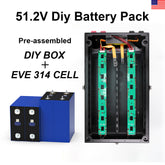

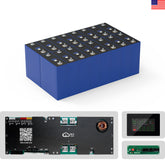

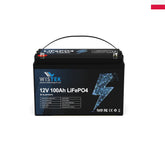
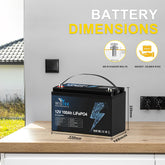

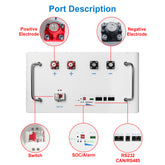
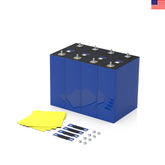
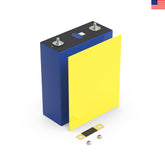
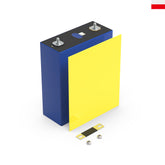

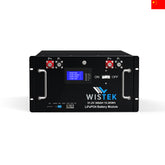
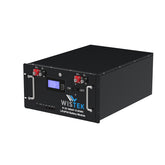
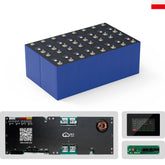







Leave a comment
All blog comments are checked prior to publishing